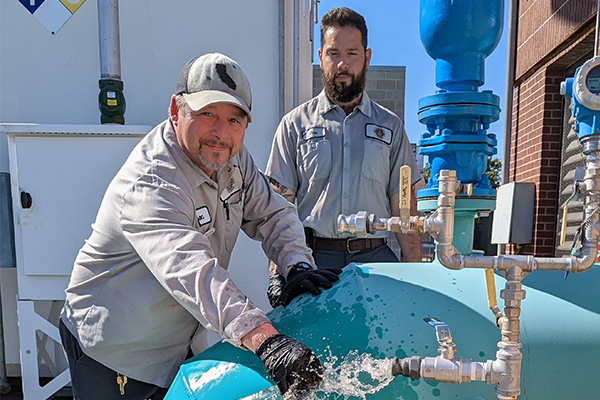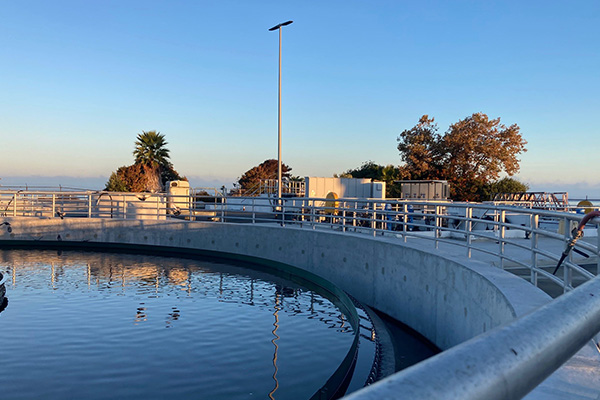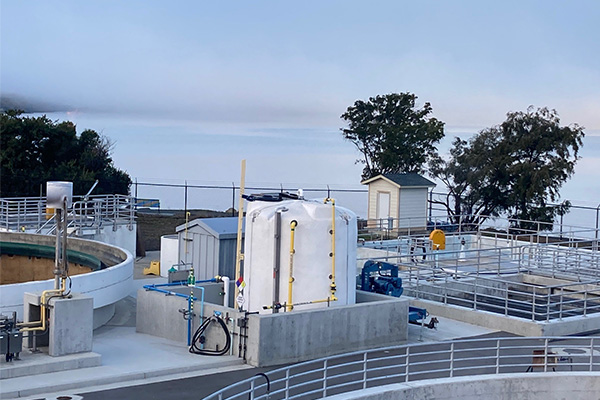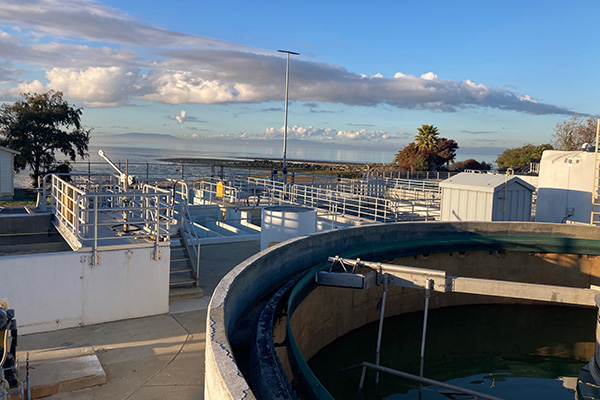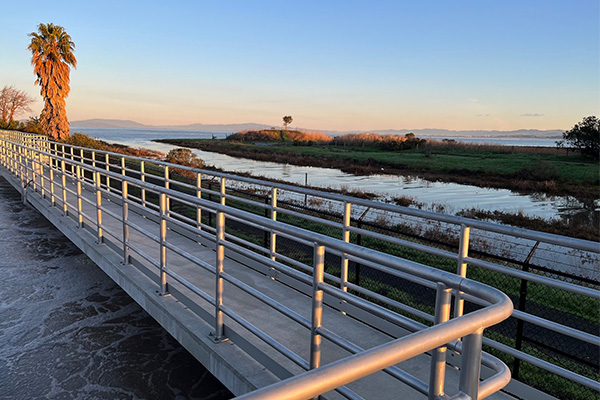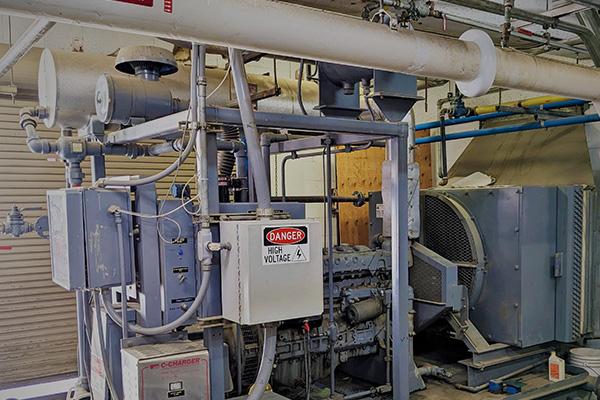Wastewater Collection & Treatment Process
The City of Pinole has a sewer collection system serving most of the City of Pinole. It provides wastewater collection to approximately 19,000 inhabitants. Some areas in the southwest areas of Pinole are served by the West County Wastewater District.
The wastewater collection system includes approximately 49 miles of City-owned gravity sanitary sewers, 565 manholes, 2 lift stations, less than a mile of pressure force mains, and about 5,340 laterals.
Step by Step: Wastewater Collection & Treatment
Wastewater collection and treatment is a complex process. Read the steps below to learn more. If you are interested in taking a tour of the plant, please call (510) 724-8964.
Plate screens
Hercules and Pinole wastewater’s first stop is passing through two rotating plate screens. Objects that cannot be broken down must be filtered out by plate screens. The screens block mostly inorganic solids: flushable wipes, cigarette butts, floss sticks, toys, toothpicks, tampons – things that people should NOT flush down the toilet that don’t break down. The objects caught in the screen get washed and compacted, then directed through a tube into a waste bin.
Grit Removal (Small Solid Material)
Organic solids: corn kernels, eggshells, coffee grounds, etc. are filtered out due to their heavy weight then separated into another bin and taken to the dump for disposal. This is a very pungent step in the process.
Lift Station
Underground, four submersible pumps lift the wastewater up through the pipes to a height that is high enough for gravity to take over and move the wastewater through the rest of the plant. During storm events, a portion of rainwater also joins the wastewater as it seeps into sewer pipes through several tiny nooks and crannies.
Air freshener
Foul air is directed to an odor control unit and hydrogen sulfide gas is removed (hydrogen sulfide is the gas responsible for the familiar “rotten egg” smell). Clean, fresh air comes out the top of the apparatus.
Microorganisms
Wastewater goes through Primary Clarifiers to allow heave solids to settle out and then the wastewater heads to large aeration basins that are filled with millions of microorganisms that require food (sludge) and air (oxygen). The aeration basins have air diffusers at the bottom to create tiny air bubbles to make it easier for the microorganisms to respirate. The microorganisms consume the dissolved organic matter in the wastewater. The WWTP laboratory monitors the health of the microorganisms by looking at their concentration and age by analyzing samples and viewing the microorganisms underneath a microscope. Oxygen levels are also very important in the aeration basins to make sure the microorganisms can thrive, and break down dissolved organic matter.
Digestion
After the microorganisms have eaten all the organic matter out of the wastewater, all of the sludge that has been removed throughout the treatment process is ready to move on to the digesters. First, the sludge is thickened with a rotating drum thickener before being pumped to the digesters. Boilers send hot water through a heat exchanger that comes into contact with sludge via permeable tubing. This process heats the sludge inside the digester to a constant 98 degrees. The hot temperature helps to break down the sludge even further and is required to meet vector control limits so the sludge does not attract pests when the sludge eventually reaches the landfill.
Sludge Energy
As the digesters breakdown the sludge, methane gas is created as a byproduct. The WWTP has an Energy Recovery System that consists of a cogeneration engine, two hot water boilers, a heat loop and three heat exchangers. The purpose of the Energy Recovery System is to create energy by using the methane gas as a fuel source for the cogeneration engine, which results in the production of power that helps run the plant.
Centrifuge
Once the digestion process is complete, heated sludge is pumped to a giant centrifuge that spins at 3,000 RPMs, separating the solids from any remaining water. The solids are deposited into a dump truck and taken to the landfill for disposal. Water that was removed by the centrifuge goes back to step 1 and is reprocessed with new inflows of wastewater.
Disinfection
The final step in the treatment process is disinfection. Sodium Hypochlorite is used to disinfect the plants effluent. Sodium Hypochlorite is a liquid form of chlorine, similar to household bleach that is used to kill any potential remaining pathogens and viruses in the water before it is released into San Pablo Bay. Just prior to release, sodium bisulfite is added to the water to neutralize any remaining chlorine, which is hazardous to marine life.
Outfall
A pipeline carries effluent water (fully treated water) to the primary outfall in Rodeo. Rodeo is an ideal location for the outfall because it has deeper water and causes less disturbance to the bay. There is a shallow water outfall location at the Pinole shoreline that is only used when pumping capacity has been exceeded at the deep water outfall in Rodeo (during heavy rain storms).

